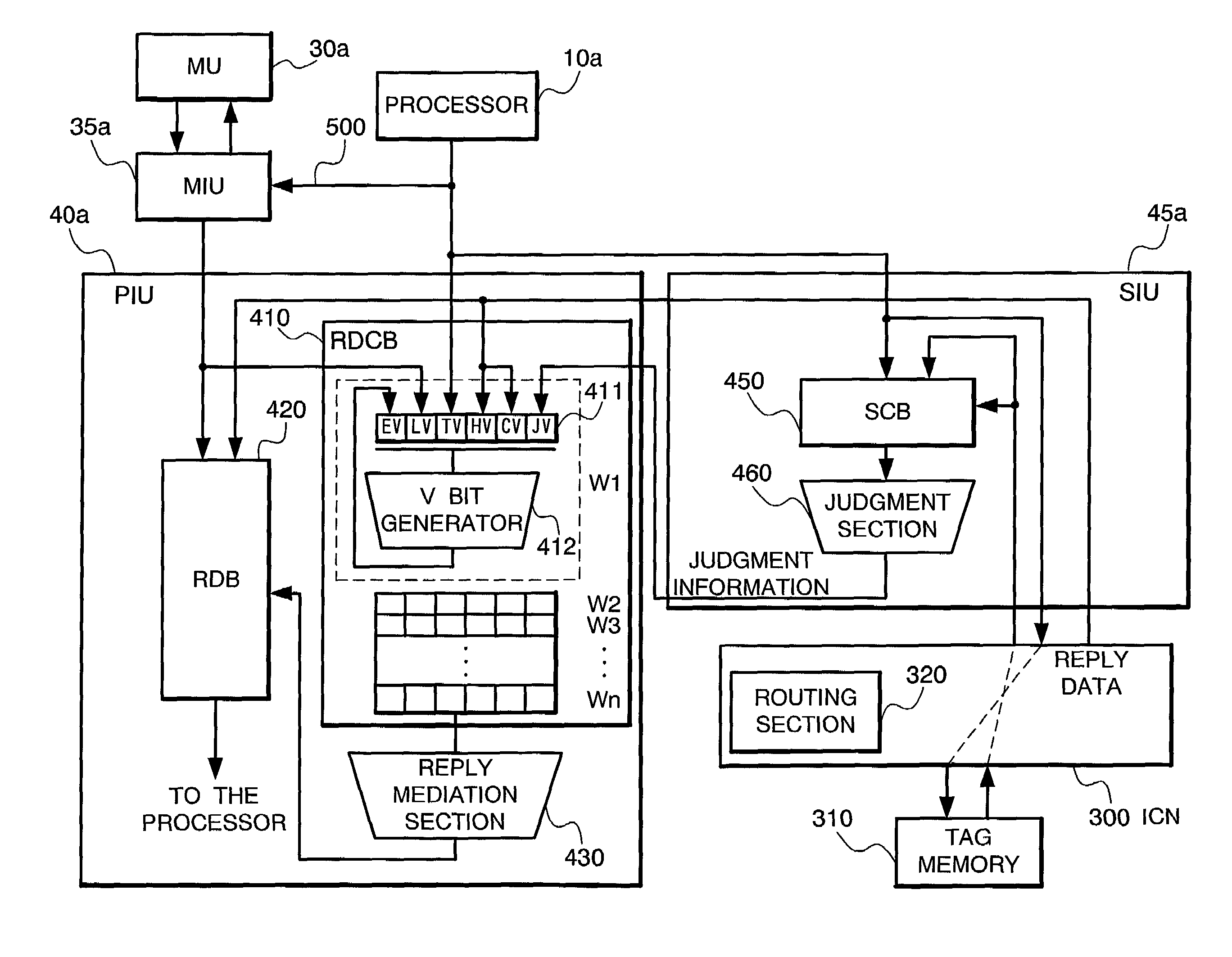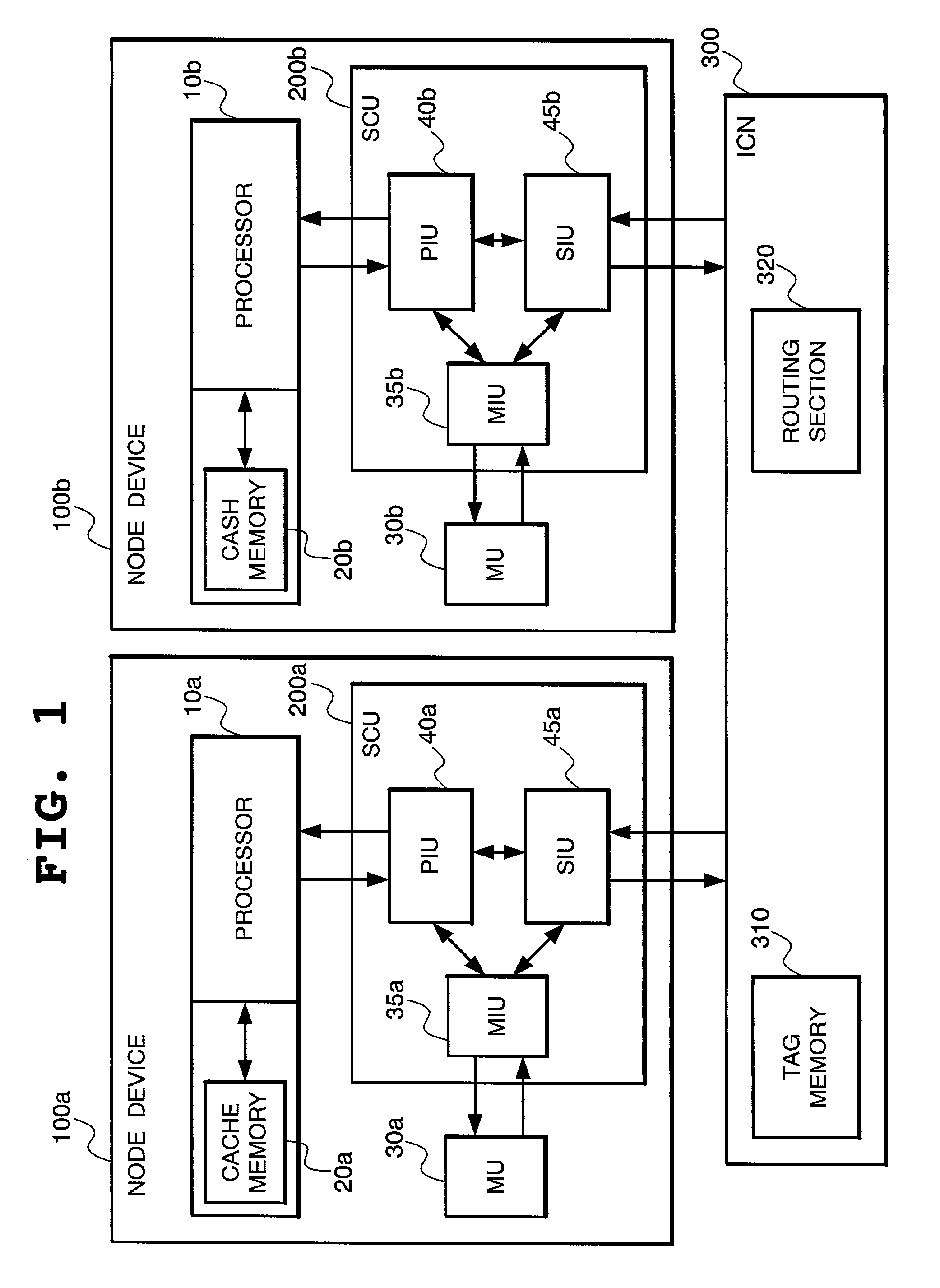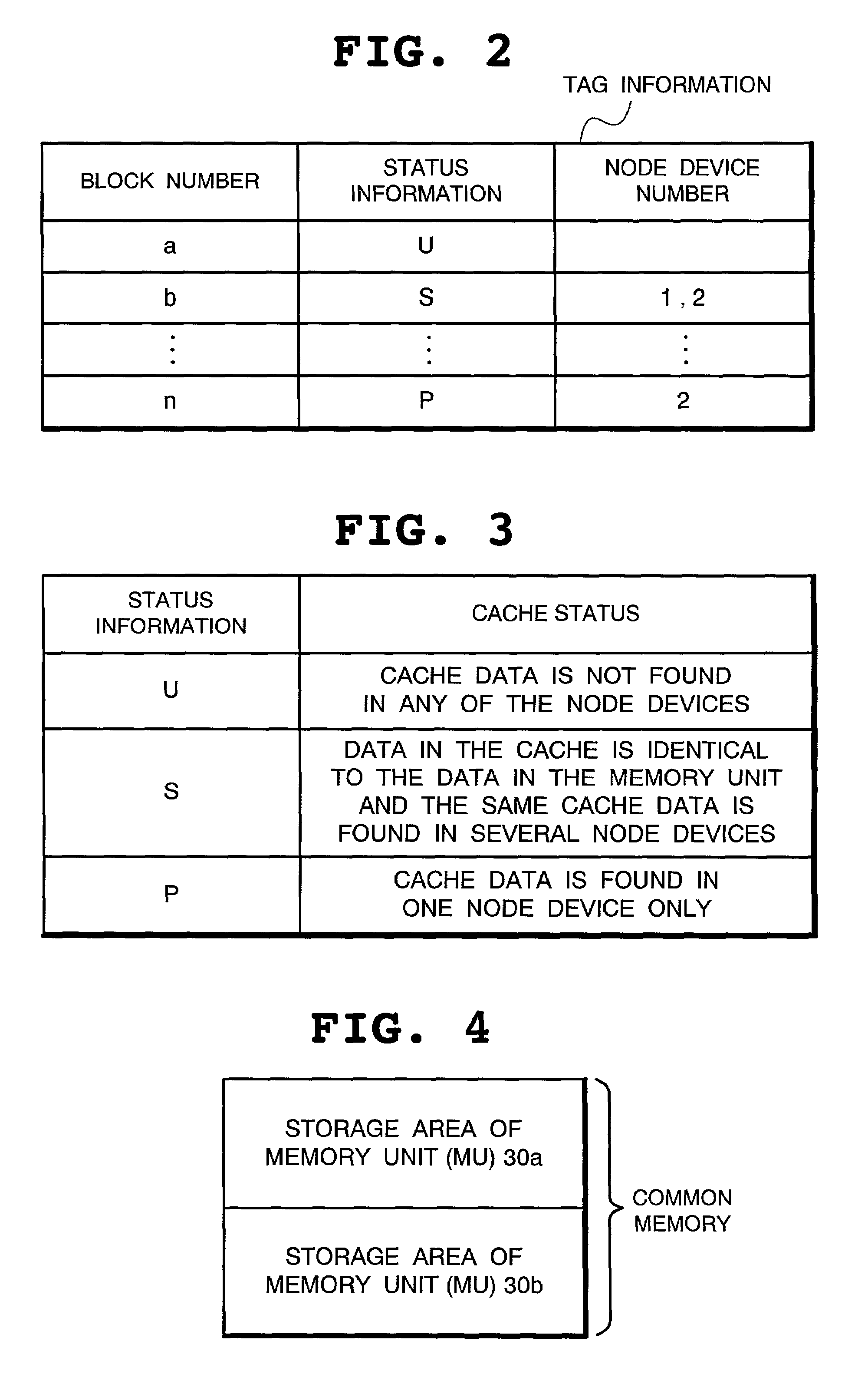Data access method in the network system and the network system
a network system and data access technology, applied in the field of data access technology, can solve the problems of large latency difference between the local node and the remote node, frequent access between the node devices, poor system performance, etc., and achieve the effect of reducing the latency
- Summary
- Abstract
- Description
- Claims
- Application Information
AI Technical Summary
Benefits of technology
Problems solved by technology
Method used
Image
Examples
first operation example
[0087]Next, the operation of the present invention will be described below. First of all, referring to FIG. 11 and other figures, case (1) of FIG. 10 will be described. In this case, the node device 100a serves as the home node and a read type transaction for the local memory (MU 30a) is issued from the processor 10a. Note here that, as shown in FIG. 15, any of the data belonging to the block data with the block No. a stored in the tag memory 310 is subject to readout by the read type transaction.
[0088]Shown at the lower part of FIG. 11 is a time chart illustrating the processing procedure of the operation in this case. As shown in FIG. 11, when the processor 10a of the node device 100a issues a read type transaction, the PIU 40a receives it and, by the routing function to detect the home node of the transaction, finds that the memory unit to be accessed by the transaction is the MU 30a, which is the local memory. The PIU 40a has the SIU 45a conduct the snoop processing for the tag ...
second operation example
[0096]Next, referring to FIG. 12 and other figures, case (2) of FIG. 10 will be described. In this case, the node device 100a serves as the home node and a read type transaction for the local memory (MU 30a) is issued from the processor 10a. Note here that, as shown in FIG. 16, any of the data belonging to the block data with the block No. a stored in the tag memory 310 is subject to readout by the read type transaction and the node device 100b is provided with the node device number “(2)”.
[0097]FIG. 12 shows a time chart illustrating the processing procedure of the operation in this case. As shown in FIG. 12, when the processor 10a of the node device 100a issues a read type transaction, the PIU 40a receives it and, by the routing function to detect the home node of the transaction, finds that the memory unit to be accessed by the transaction is the MU 30a, which is the local memory. The PIU 40a has the SIU 45a conduct the snoop processing for the tag memory 310 and, at the same tim...
third operation example
[0105]Referring now to FIG. 13 and other figures, case (3) of FIG. 10 will be described. In this case, the other node device 100b serves as the home node and a read type transaction for the memory unit (MU 30b) is issued from the processor 10a. Note here that, as shown in FIG. 17, any of the data belonging to the block data with the block No. b stored in the tag memory 310 is subject to readout by the read type transaction.
[0106]FIG. 13 shows a time chart illustrating the processing procedure of the operation in this case. As shown in FIG. 13, when the processor 10a of the node device 100a issues a read type transaction, the PIU 40a receives it and, by the routing function to detect the home node of the transaction, finds that the memory unit to be accessed by the transaction is the MU 30b in the remote node 100b. The PIU 40a has the SIU 45a conduct the snoop processing for the tag memory 310 and, at the same time, sends the control information to the ICN 300 to execute the speculat...
PUM
 Login to View More
Login to View More Abstract
Description
Claims
Application Information
 Login to View More
Login to View More - R&D
- Intellectual Property
- Life Sciences
- Materials
- Tech Scout
- Unparalleled Data Quality
- Higher Quality Content
- 60% Fewer Hallucinations
Browse by: Latest US Patents, China's latest patents, Technical Efficacy Thesaurus, Application Domain, Technology Topic, Popular Technical Reports.
© 2025 PatSnap. All rights reserved.Legal|Privacy policy|Modern Slavery Act Transparency Statement|Sitemap|About US| Contact US: help@patsnap.com



